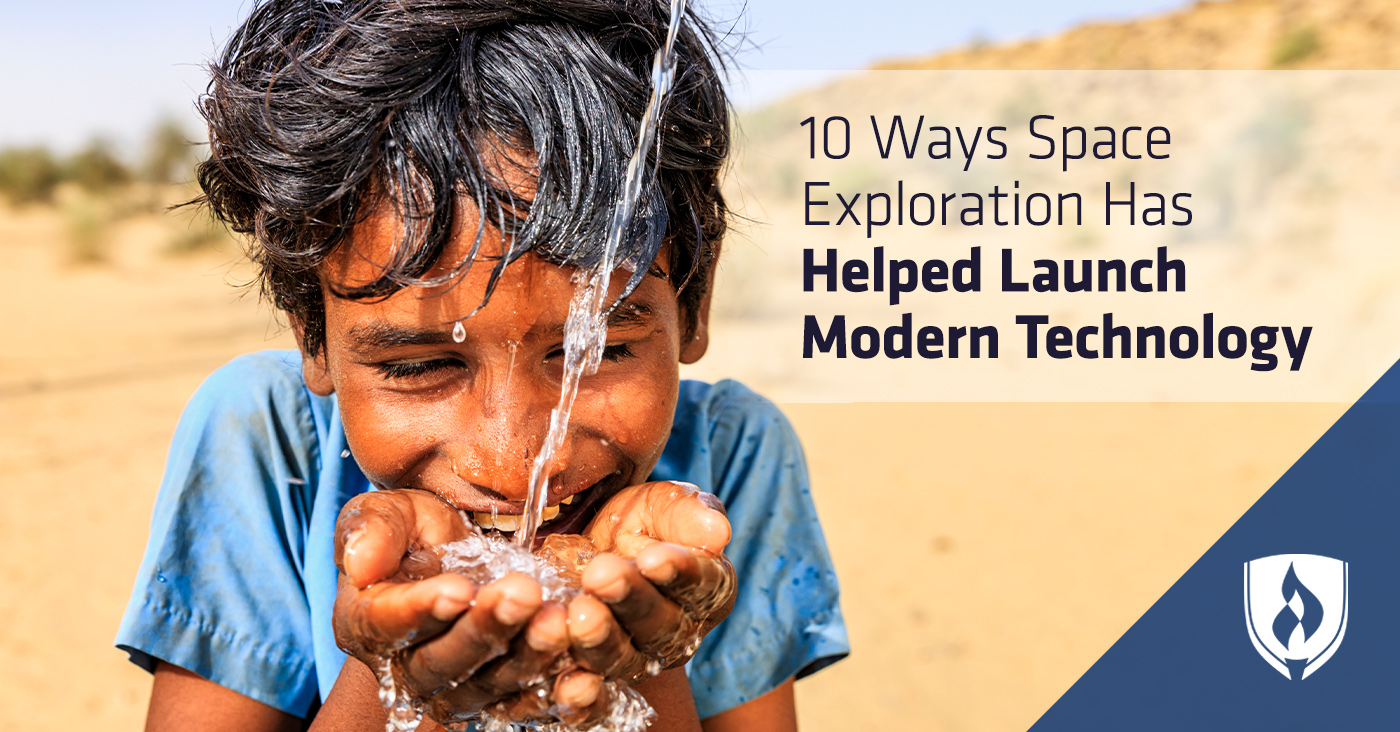
There is no denying the astronomical impact space exploration has had on human history. After centuries of people dreaming about the possibility of spaceflight, rockets designed to withstand the force of gravity were developed in the latter half of the 20th Century.
Once the doors to human exploration of space were open, the cosmic accomplishments started lining up — satellites were launched, humans experienced space travel, men walked on the moon, video communications from space down to earth were enabled and so much more.
And each milestone has brought with it a number of new discoveries. Not only has the human race learn more about what lies beyond the realm of our planet, but we’ve learned more about surviving in the harsh, unfamiliar conditions of space. New technologies were created to better equip space exploration, but the benefits of these technological developments didn’t end when the rockets returned to earth.
Take a look at ten ways space research has impacted life as we know it on earth.
10 advances in technology that stemmed from space research
Safety
1. Car crash technology
Technology utilizing remotely detonated explosive bolts of energy to free the Space Shuttle from its rocket boosters on blast-off have since been adapted for a much more earth-bound purpose. Powerful equipment has been developed to more effectively and efficiently cut people out of car crashes using the same pyrotechnic devices.
2. Fire detection technology
Space research and testing led the way for the development of a terrestrial detection tool that uses high-resolution optical sensors to monitor forests for fires. These networks of cameras can be mounted on towers or masts to reliably detect fires in any weather at any time of day.
3. Mine-clearing technology
What was first developed as a type of surplus rocket fuel has since been used in the creation of a device that can safely destroy land mines. This high tech gadget uses NASA’s favored fuel to burn a hole in the mine’s casing before burning away its explosive contents.
Healthcare
4. Pill transmitters
Pill transmitters were first created to act as a manageable and effective way to monitor the health of astronauts. In theory, the pill-sized gadget would be swallowed and then would track the temperature, blood pressure and other vital signs of its subject. This revolutionary technology has since undergone trials to be used as a way to monitor the health of fetuses in the womb. Also referred to as the ‘smart pill’, this technology is still developing, but carries with it some promising possibilities.
5. Heart health
Space exploration has yielded a number of monumental benefits in the preservation of heart health. Precise lasers have been adapted from NASA’s methods of monitoring gases in the atmosphere to help surgeons deal with blockage in arteries. The lasers allow for extreme precision that’s not always afforded to surgeons through bypass surgery alone. NASA’s work in telemetry — or the wireless control of devices — has also enabled the creation of the pacemaker.
6. CAT scans
Thanks to NASA’s image-processing technology that was first developed to allow computer enhancement of images of the moon, a number advances in medical imaging technology have been enabled. While NASA did not directly invent MRI technology, its technology paved the way for capturing and enhancing images of the organs in the human body for diagnostic purposes through advanced imaging techniques like CTs or CAT scans.
7. Chromosome analysis
Another medical breakthrough that resulted from state-of-the-art image-processing technology is chromosome analysis. This has allowed the mounting of tiny cameras on microscopes, providing methods of photographing human chromosomes in ways scientists never could.
Environment and energy
8. Clean energy
After developing the Space Shuttle Main Engine, NASA and its affiliate researchers refined the technology and used the expertise gained to create clean energy technology. With a goal of decreasing carbon emissions by 10 percent, this could equate to taking approximately 50,000 cars off the road! These efforts are in addition to NASA’s development of efficient solar-power technologies back in the 1980s. You can learn more about NASA’s clean energy efforts on its website.
9. Water purification
After developing a method to filter water for manned space missions, NASA modified its water purification technology to be put to use worldwide. Now, thanks to NASA, at-risk areas can gain access to advanced water filtration and purification systems, which has resulted in life-saving strides toward human survival on a planetary level.
10. LED technology
Light-emitting diode (LED) chips were first developed as a light source to grow plants in space. While they release waves of light 10 times brighter than the sun, LEDs provide high-energy efficiency and virtually no heat. Not only has this resulted in more energy-efficient light sources in our homes and facilities, but it has also been discovered that LEDs can activate light-sensitive drugs used to treat tumors that, when injected intravenously, can completely destroy cancer cells without causing extensive damage to surrounding tissue.
The impressive impact of technology
We can thank some of the best minds of our time for enabling the previously untapped worlds of space exploration and also for developing — often unintentionally — paths toward some truly groundbreaking advances in modern technology. From saving lives to lessening our impact on the environment, the benefits of these technological developments cannot be understated.
It’s no secret by now that the powers of technology can be used to help people in insurmountable ways. Learn more about its impact in our article: 6 Surprising Ways Computer Science Benefits Society.
RELATED ARTICLES:




